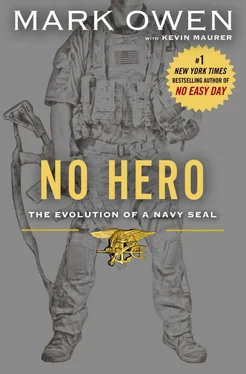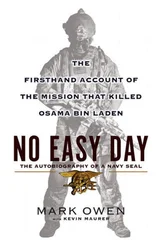Something was very wrong.
All I could hear was my breathing through my oxygen mask and the flapping of the parachute above me. I took a quick look at my altimeter. I was finally remembering all the basic skydiving rules that I had been taught.
“Always be altitude aware.”
I was at eighteen thousand feet, so I had plenty of altitude and time to fix the problem with my chute. But not much time, if I wanted to stay with the others. By now, my teammates were above me, I figured, and with good parachutes they were probably already flying toward the target.
I could hear the snapping of the parachute above me as I started to bank into a lazy turn. At first it was a slow circle, but by the second rotation I was picking up speed. I’d seen the videos of guys with parachutes rolled tight like cigarettes burning into the ground. My parachute had some lift, because I wasn’t falling like a meteor. But I had no ability to control my chute, and the spinning was getting faster and faster. I feared if the spinning became too violent I’d lose consciousness.
I had to act.
All of a sudden my mind started focusing on my emergency procedures, snapping me into my three-foot world. Up until this point I was worried about my comfort and how the older guys were going to make fun of me for fucking up my exit. But none of those things were in my three-foot world. Worrying about that wasn’t going to help me with my parachute malfunction.
An eerie calm came over me, washing away the panic and discomfort. First I had to find a way to see my malfunctioning parachute.
As I turned, I craned my neck, and I could just make out the parachute. One side was fat and full of air. The other fluttered limply like a bird’s broken wing. I’d caused the malfunction when I pulled my parachute handle in the middle of an uncontrolled spin. I was so out of control that the pilot chute, which drags the main chute out of the pack, got tangled on some of the steering lines at the edge of my canopy. The pilot chute was preventing the main chute from opening fully.
There was no way I was going to save this parachute. My only chance was to cut away from the main parachute and pull the reserve. I was picking up more and more speed. The constant revolutions were making me dizzy. It was impossible to focus on the horizon.
We’re taught how to deploy our reserve parachutes over and over again until it becomes muscle memory. I took a deep breath, looked down at my cutaway handle, and pulled it. I could feel the main chute break away, and for a split second I started to free-fall again. Once the main chute cleared, a static line pulled the reserve chute. It sprung open and jerked me to a halt.
I immediately looked up to check if I had a good reserve canopy. I hoped like hell that I did, because we don’t have another reserve. The main and reserve chute were it. Above me, the reserve parachute was full and fat with air. It flapped gently in the breeze. I pulled on the steering lines to make sure everything was working. Before I keyed the radio to report to the lead jumper, I took a split second to enjoy the silence. It’s a crazy silence you can experience only when you’re floating through the night sky under a parachute.
I could hear the lead jumper checking in, and I looked at my GPS and altimeter and got my bearings. They were already headed for the landing zone.
“This is jumper twelve,” I said over the radio. “I had a cutaway. I’m at eighteen thousand feet and my distance to target is ten kilometers. I don’t have you in sight.”
“Roger, jumper twelve,” the lead jumper said. “We’re at twenty thousand feet. Our distance to target is eight kilometers. My heading is one, four, five degrees.”
I pulled on the steering lines, turning in a sweeping arc to get online with the target and the rest of the jumpers. I slowed my descent and stayed on track. Soon, in the distance, I could see my teammates’ parachutes. I worked my way back into the stack as we closed in on the landing area. By the time we landed I was right in the middle with the other jumpers.
I grounded my parachute and gathered up my gear. All of the guys around me were jovial, happy with the jump. But I was pissed at myself for making such a rookie mistake. I let fear control me. I wasn’t focused and it could have cost me my life.
When it was time to patrol, I got into line and marched to the rendezvous with the buses. I stowed my gear and took a seat near the back, still going over the jump in my head. I was the new guy and couldn’t afford to make stupid mistakes. Making it worse, I’d made more than one mistake. I realized my jump was less than perfect from the start. The moment I stepped on the C-130 I was focused on how uncomfortable I was and not on what I was about to do. What if I’d pulled that shit in a firefight? I knew damn well a gunshot wound was going to be a lot more uncomfortable than an ill-fitting pack. I was too worried about all the shit that couldn’t directly affect me that night, rather than focusing on all the stuff I could control, and that could kill me.
I needed to know my gear better. From that day, I focused on making sure everything I wore always fit the same and I was always comfortable, or at least as comfortable as two hundred pounds of gear strapped to your body can feel. The obsession went beyond jumping. All of my uniforms and kit fit and were comfortable. I became really good at making sure that if something wasn’t fitting right, I was going to take the time to make sure it was near perfect. And it wasn’t just the gear I was issued that I obsessed over, but gear I helped design.
But being uncomfortable on the plane was only the first problem. Once my exit went to shit, I started to panic. That is a mistake that more often than not is fatal. Once I stayed in my three-foot world, I got back on track. Instead of looking outward to solve the problem, I focused on the things I could control.
The buses dropped us off at the airport, where we unpacked and met to do an AAR. Everyone on the jump sat down at tables in the briefing room. The lead jumper started going over the mission. Each jumper chimed in with any issues. It finally got to me.
“I had a bad exit,” I said. “My main chute malfunctioned. I had to go to my reserve.”
After the debrief, one of the team leaders pulled me aside.
“Hey,” my team leader said. “So what caused the malfunction?”
“I had a bad exit,” I said.
“I know,” my team leader said. “Why? What caused the bad exit?”
“I didn’t have good body position,” I said. “When I started spinning, I got nervous and pulled my main. It’s because I was so unstable when I pulled my main that I think I caused the malfunction.”
We sat together for the next few minutes going over the jump. I know now that he wanted to make sure I learned from my mistakes.
“Walk through putting your gear on,” he said. “Walk through the procedures inside the aircraft, your body position on exit, your emergency procedures. Then last but not least, walk through in your mind what you’re going to do while flying your canopy.”
The team leader stressed the need to walk through the whole jump in my mind, prior to doing it. It is something I do before every jump now.
People think SEALs are fearless. Think again. No one lives without fear; heights were my Achilles’ heel. I probably should have thought of that before leaping at the chance to go to Las Vegas on the Navy’s dime. I should have used that fear to master the skydiving procedures from the beginning. I guess I needed a close call to learn a lesson I’ll never forget.
Instead of focusing on the fear and being afraid, I have learned to focus on what I can control. I control my gear. I control my rehearsals, and I control my mind and my decision making.
Читать дальше










